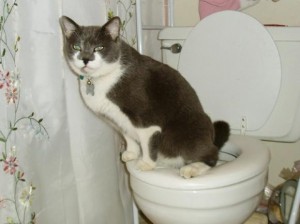Why You Mustn't Flush Cat Poop Down Your Toilet - Maintain Your Pipe System
Why You Mustn't Flush Cat Poop Down Your Toilet - Maintain Your Pipe System
Blog Article
What are your concepts on Can You Flush Cat Poo or Litter Down the Toilet??
Introduction
As pet cat owners, it's vital to bear in mind how we dispose of our feline good friends' waste. While it may appear convenient to flush pet cat poop down the toilet, this method can have detrimental repercussions for both the setting and human health and wellness.
Ecological Impact
Purging cat poop introduces dangerous pathogens and parasites into the water system, posturing a significant risk to water environments. These impurities can adversely influence aquatic life and concession water high quality.
Wellness Risks
In addition to ecological concerns, purging feline waste can additionally position health risks to human beings. Pet cat feces might contain Toxoplasma gondii, a parasite that can trigger toxoplasmosis-- a possibly serious health problem, particularly for pregnant ladies and individuals with damaged body immune systems.
Alternatives to Flushing
Thankfully, there are much safer and much more accountable means to throw away feline poop. Consider the following choices:
1. Scoop and Dispose in Trash
One of the most usual method of throwing away cat poop is to scoop it into a biodegradable bag and throw it in the garbage. Make certain to utilize a committed litter inside story and deal with the waste without delay.
2. Use Biodegradable Litter
Opt for naturally degradable pet cat clutter made from materials such as corn or wheat. These trashes are eco-friendly and can be securely disposed of in the garbage.
3. Hide in the Yard
If you have a backyard, take into consideration hiding feline waste in an assigned area away from veggie yards and water resources. Make sure to dig deep enough to prevent contamination of groundwater.
4. Mount a Pet Waste Disposal System
Purchase an animal waste disposal system especially created for cat waste. These systems use enzymes to break down the waste, lowering odor and ecological effect.
Conclusion
Accountable animal ownership prolongs past giving food and sanctuary-- it additionally involves proper waste monitoring. By avoiding purging feline poop down the toilet and opting for alternative disposal techniques, we can minimize our environmental footprint and secure human health.
Why Can’t I Flush Cat Poop?
It Spreads a Parasite
Cats are frequently infected with a parasite called toxoplasma gondii. The parasite causes an infection called toxoplasmosis. It is usually harmless to cats. The parasite only uses cat poop as a host for its eggs. Otherwise, the cat’s immune system usually keeps the infection at low enough levels to maintain its own health. But it does not stop the develop of eggs. These eggs are tiny and surprisingly tough. They may survive for a year before they begin to grow. But that’s the problem.
Our wastewater system is not designed to deal with toxoplasmosis eggs. Instead, most eggs will flush from your toilet into sewers and wastewater management plants. After the sewage is treated for many other harmful things in it, it is typically released into local rivers, lakes, or oceans. Here, the toxoplasmosis eggs can find new hosts, including starfish, crabs, otters, and many other wildlife. For many, this is a significant risk to their health. Toxoplasmosis can also end up infecting water sources that are important for agriculture, which means our deer, pigs, and sheep can get infected too.
Is There Risk to Humans?
There can be a risk to human life from flushing cat poop down the toilet. If you do so, the parasites from your cat’s poop can end up in shellfish, game animals, or livestock. If this meat is then served raw or undercooked, the people who eat it can get sick.
In fact, according to the CDC, 40 million people in the United States are infected with toxoplasma gondii. They get it from exposure to infected seafood, or from some kind of cat poop contamination, like drinking from a stream that is contaminated or touching anything that has come into contact with cat poop. That includes just cleaning a cat litter box.
Most people who get infected with these parasites will not develop any symptoms. However, for pregnant women or for those with compromised immune systems, the parasite can cause severe health problems.
How to Handle Cat Poop
The best way to handle cat poop is actually to clean the box more often. The eggs that the parasite sheds will not become active until one to five days after the cat poops. That means that if you clean daily, you’re much less likely to come into direct contact with infectious eggs.
That said, always dispose of cat poop in the garbage and not down the toilet. Wash your hands before and after you clean the litter box, and bring the bag of poop right outside to your garbage bins.
https://trenchlesssolutionsusa.com/why-cant-i-flush-cat-poop/

I'm certainly very drawn to How to Dispose of Cat Poop and Litter Without Plastic Bags and I am assuming you appreciated my article. I beg you take a moment to share this post if you enjoyed it. Thank you so much for going through it.
Phone Report this page